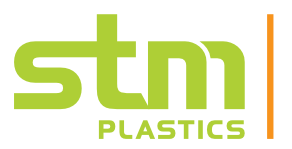Thermoforming
What is Thermoforming?
Plastic thermoforming is a manufacturing process used to create plastic parts and products. The process involves heating a plastic sheet until it becomes pliable, and then forming it into a desired shape using a mold, or tool. It is a versatile and cost-effective process that can be used to create a wide range of products, from simple trays and packaging to complex automotive parts and medical devices.
The video above shows one of our pre-formed ponds being formed. It has a deep draw, so we’re using an assist plug to help push the material into the tool. This helps maintain wall thickness in the deeper portion of the tool.
Why Use Thermoforming?
There are pros and cons to every plastic manufacturing process, so it’s important to find the right process for your application. A few reasons you might want to consider thermoforming for your project are:
- Tooling Costs – Upfront tooling costs for thermoforming are less expensive and have shorter lead times than for other types of plastic manufacturing.
- Low to Medium Volume Production – The low initial investment makes thermoforming a great option for low to medium volume production run.
- Time to First Production – The shorter lead times for thermoforming tooling can help you get your first part or product faster.
- Large Parts – Relative to other types of plastics manufacturing, thermoforming can produce large parts easily and economically. At STM, we can run parts up to 10 feet in length.
- Prototyping – There is still upfront tooling costs associated with prototyping via thermoforming, but an economical low-volume tool can be made and used for prototyping parts before investing in a full-production tool. With the rise of additive manufacturing, size, material and application should all be considered to determine the best method for prototyping your part.
Basic steps of the plastic thermoforming process:
Material selection
The first step is to choose the appropriate plastic material for the intended application. The material needs to be able to withstand the thermoforming process and provide the desired properties, such as strength, flexibility, or clarity. The material will be sourced in the form of plastic sheet. Check out our DESIGN GUIDE for more information on some common thermoplastic materials. We are more than happy to help you choose your material or suggest substitute materials if needed.
Heat
The plastic sheet is then heated until it reaches a pliable state. This can be done using an oven or a specialized heating system.
Form
Once the plastic sheet is heated, it is placed over a mold or tool, which is designed to create the desired shape of the final product. The plastic sheet is then pulled down onto the mold using a vacuum, which forces the plastic to form to the mold’s shape.
Cool
After the plastic has been formed, it is cooled to set the shape and lock in the desired properties.
Trim
Finally, the excess plastic around the edges of the part is trimmed off, and any finishing touches are added.

